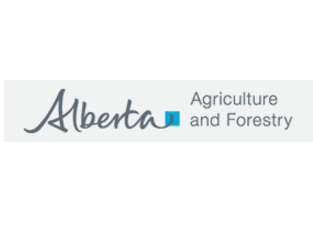Source: Alberta Agriculture and Forestry
This cost and return report analyzes the performance of participating Alberta cow-calf operations from 2014 to 2018.
“As 2019 draws to a close, most of the spring-born calves have been weaned,” says Ann Boyda, livestock economist with Alberta Agriculture and Forestry. “Now is a good time to analyze the business to see what it costs to produce these weaned calves. The AgriProfit$ program is again helping farmers and ranchers do just that with the newly released AgriProfit$ 2014-2018 benchmark report.”
The report provides performance indicators for the value of production, itemized variable costs – feed, veterinary and medicine, trucking, repairs, labour – and capital costs such as rent, taxes, insurance, depreciation and capital interest. It also looks at physical performance indicators relative to breeding and calving length, death losses, feed use, conception rate and calving rates along with pounds weaned per exposed cow and per winter cow.
She looks at how the effect of 2018’s erratic weather – late spring, cool temperatures in summer, variation in moisture and generally wet conditions in fall – is reflected in the report.
“That weather attributed to higher than the 5-year average feed costs. Calf prices reportedly fluctuated over the year from $187 per cwt early in the year, to over $175.60 per cwt mid-year and finishing around $180.49 per cwt. The 2018 prices were slightly lower than that of 2017 but stronger that the lows of 2016. As a result, margins tighten to 41 cents per lb and net returns at 17 cents per lb.”
She adds that changes in feed strategies were evident with winter feed use seeing a drop to 3.5 tonne as fed per cow, 12.5% lower than the 5-year average.
“Pasture costs increased to compensate, and further investigation is warranted to determine the nature of the change in practices.”
“As well,” she adds, “current ratios – current assets to current liabilities – show a downward trend. It is still healthy but diminishing. The 2018 current ratio of 2.67 was down from 2017 and lower than the 5-year average. This may reflect adjustment of practices to use cash more efficiently as ratios higher than 1.5 indicates that the farm is technically liquid. In addition, a slightly higher debt-to-asset ratio of 0.13 is reported for 2018. Although a ratio of less than .25 is considered strong and solvent, the increase in liabilities is evident in higher capital interest expenses.”
“So,” she asks, “what will the 2019 benchmarks show? Many participants are now busily gathering their financial and production records and reflecting on the information. They are also looking to year-over-year comparisons to see if they are on the right track. You too can be included in the next benchmark results by enroling in AgriProfit$.”
AgriProfit$ provides customized farm business analysis at no charge to Alberta producers. The program collects annual cost and return data from producers and calculates yearly averages and 5-year rolling average benchmarks. Producers can use these benchmarks to evaluate their own herd’s performance and consider where there may be opportunity to improve. AgriProfit$ is a free service. Producer information is held in strict confidence. Only aggregated, non-identifying information is published.
Contact
Connect with Ann Boyda about this report and AgriProfit$:
Phone: 780-422-4088
Toll free: 310-0000 before the phone number (in Alberta)
Email: ann.boyda@gov.ab.ca









